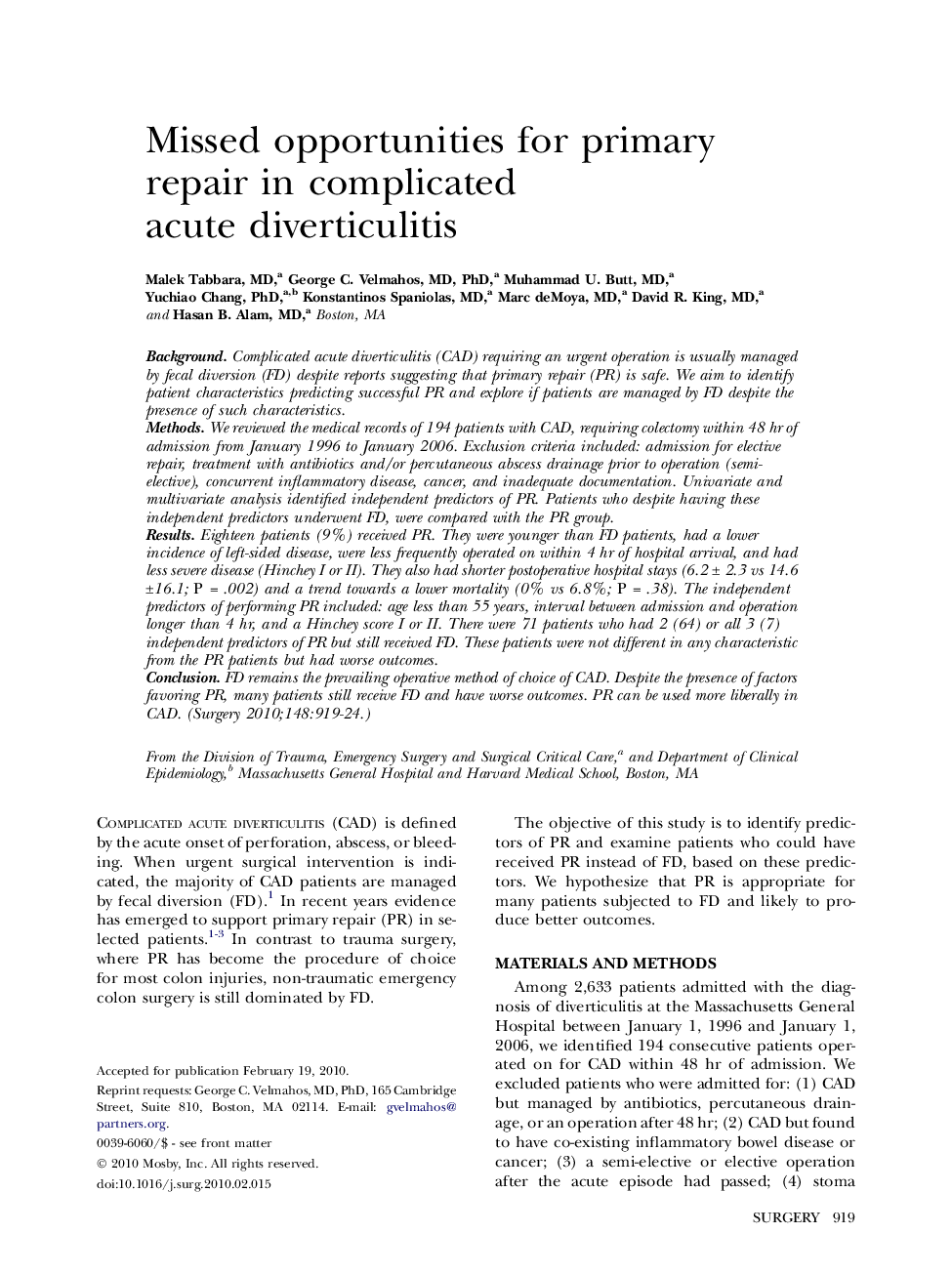| Article ID | Journal | Published Year | Pages | File Type |
|---|---|---|---|---|
| 4308940 | Surgery | 2010 | 6 Pages |
BackgroundComplicated acute diverticulitis (CAD) requiring an urgent operation is usually managed by fecal diversion (FD) despite reports suggesting that primary repair (PR) is safe. We aim to identify patient characteristics predicting successful PR and explore if patients are managed by FD despite the presence of such characteristics.MethodsWe reviewed the medical records of 194 patients with CAD, requiring colectomy within 48 hr of admission from January 1996 to January 2006. Exclusion criteria included: admission for elective repair, treatment with antibiotics and/or percutaneous abscess drainage prior to operation (semi-elective), concurrent inflammatory disease, cancer, and inadequate documentation. Univariate and multivariate analysis identified independent predictors of PR. Patients who despite having these independent predictors underwent FD, were compared with the PR group.ResultsEighteen patients (9%) received PR. They were younger than FD patients, had a lower incidence of left-sided disease, were less frequently operated on within 4 hr of hospital arrival, and had less severe disease (Hinchey I or II). They also had shorter postoperative hospital stays (6.2 ± 2.3 vs 14.6 ±16.1; P = .002) and a trend towards a lower mortality (0% vs 6.8%; P = .38). The independent predictors of performing PR included: age less than 55 years, interval between admission and operation longer than 4 hr, and a Hinchey score I or II. There were 71 patients who had 2 (64) or all 3 (7) independent predictors of PR but still received FD. These patients were not different in any characteristic from the PR patients but had worse outcomes.ConclusionFD remains the prevailing operative method of choice of CAD. Despite the presence of factors favoring PR, many patients still receive FD and have worse outcomes. PR can be used more liberally in CAD.
